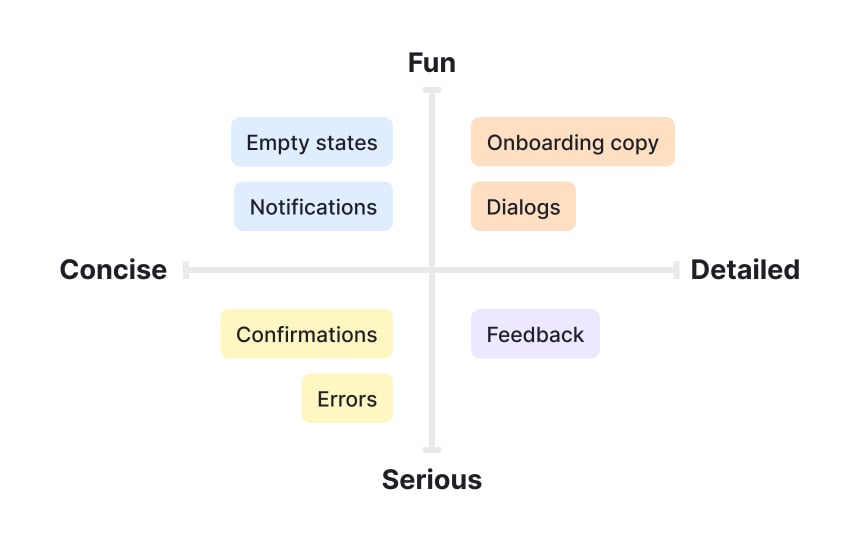Tone mapping
Tone mapping is a strategic tool that helps UX writers choose the correct tone for different contexts. To create a tone map:
- Start by considering the key points in your users' journey. If you have a journey map — user actions with thoughts and emotions in a timeline — use the different stages written out in it.[1]
- Next, choose the dimensions that can represent your range. The easiest way is to choose two dimensions and draw a grid with two intersecting lines, where each axis represents a dimension. The dimensions in the example are fun/serious and concise/detailed. Keep in mind that the choice of dimensions will depend on your product.
- Finally, plot each stage of the user journey onto the map. Refer to a journey or empathy map and consider asking yourself the following questions:
- How much space will those words take up on a screen?
- Is it vital to have a complete comprehension of the message?
- Is there a destructive action at stake?
- How do you want users to feel at this point of the journey?[2]
All tone options should match your desired voice. If your brand voice is inspirational, it should stay consistently so. However, the tone will vary depending on the context, from serious to fun or concise to detailed.

